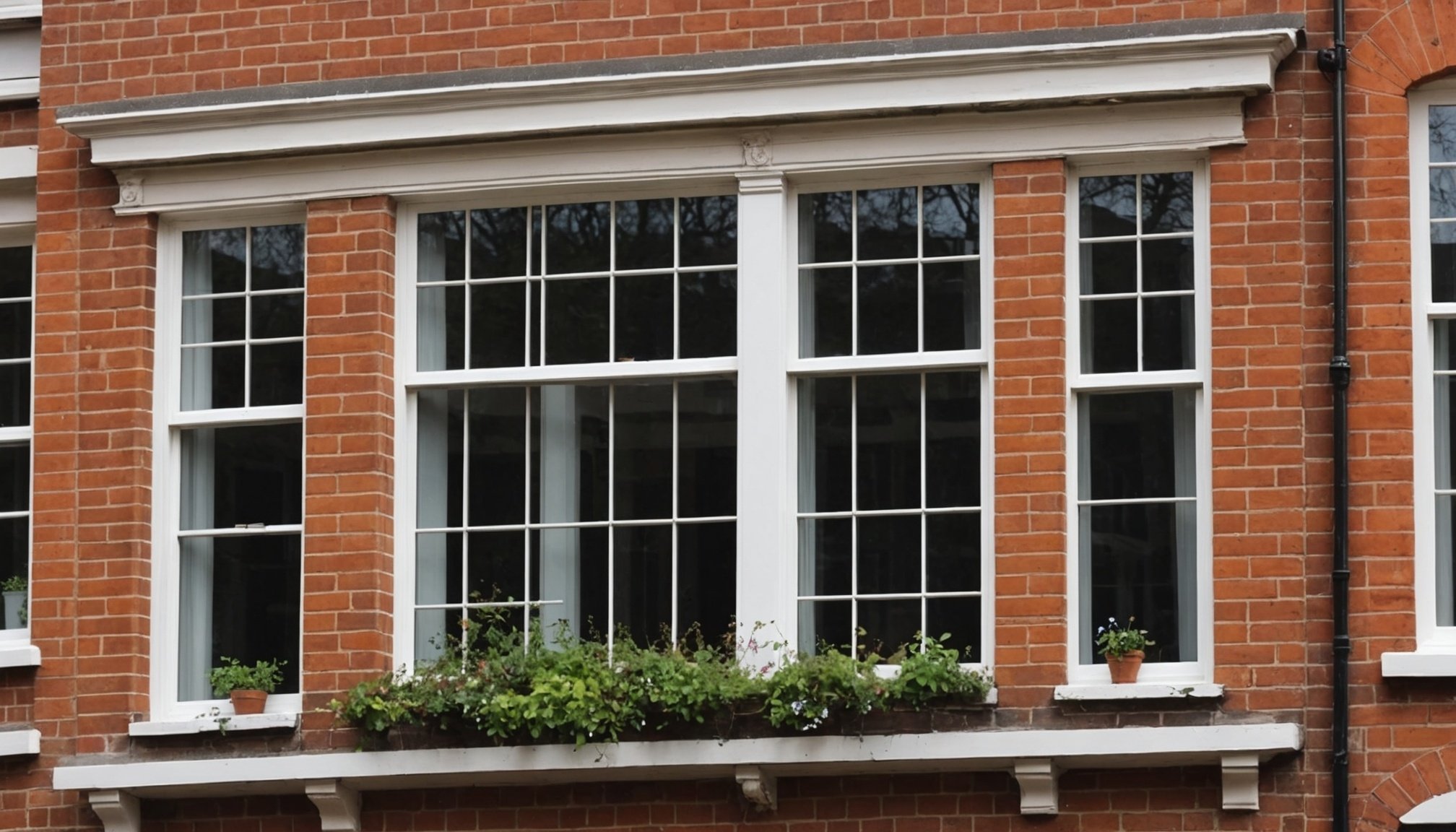Understanding Sash Windows and Their Importance in Conservation Areas
Sash windows are quintessential to the United Kingdom’s architectural charm, embodying a unique blend of historical value and practicality. Characterised by their sliding sashes, these windows often date back to the 17th century and have been a staple in British design ever since. Sash windows typically comprise two frames, or sashes, that slide vertically to open and close, a design that not only maximises ventilation but also preserves the aesthetic of period properties.
Their importance in conservation areas cannot be overstated. These areas are designated to protect places of special architectural or historic interest, where the character or appearance should be preserved or enhanced. In such locations, sash windows are integral to maintaining the historical value of the environment. The uniformity and style they provide help to safeguard the visual integrity of streetscapes known for their distinctive charm.
Cela peut vous intéresser : Ultimate Guide to Basement Waterproofing Solutions for Homes on UK Hillsides
Furthermore, sash windows contribute significantly to the architectural heritage within conservation areas, ensuring that the historical integrity of properties is preserved for future generations. Through conservation regulations, sash windows continue to charm urban and rural settings alike, enhancing both the cultural richness and the character of the areas they adorn.
Essential Maintenance Practices for Sash Windows
Caring for sash windows involves a series of best practices aimed at preserving their beauty and functionality. Begin with regular routine inspections to identify any wear or damage early. Checkpoints should include the sash cords, weights, and pulleys. These components are crucial for smooth operation, and addressing frayed cords or worn pulleys can prevent more significant issues.
Avez-vous vu cela : Top Material Choices for a Long-lasting and Safe Playground Set in Your UK Suburban Garden
It’s essential to incorporate some recommended cleaning techniques in your maintenance routine. Use a gentle cleanser and a soft cloth to avoid scratching or damaging the glass or frames. Avoid harsh chemicals or abrasive materials that can wear down the paint and varnish, thus compromising the window’s integrity.
Timely intervention is key. Addressing issues promptly, such as sticking or rattling sashes, can prevent the need for extensive repairs. Neglecting minor problems often leads to further deterioration, making repairs more costly and time-consuming.
In summary, diligent sash window maintenance not only accentuates the historical value of a property but also prolongs the lifespan of these classic windows. Stay attentive to signs of distress and implement both preventative measures and timely fixes to ensure their lasting elegance and efficiency.
Repairing Common Issues with Sash Windows
Sash windows, known for their elegance, can, unfortunately, face common problems such as rot and stiffness over time. Recognising these issues early is crucial for effective sash window repairs.
Identifying Common Problems
Common problems like rot occur mainly due to moisture exposure. Identify these issues by inspecting the wood for softness or discoloration. Stiffness, on the other hand, might result from accumulated dirt or painted-over joints, making opening and closing difficult.
DIY Guidelines for Basic Repairs
For those venturing into repairs, begin by determining if the problem is surface-level. If so, consider replacing glazing putty. This involves:
- Gently removing the existing putty.
- Cleaning the area thoroughly.
- Applying new putty evenly.
When dealing with rot, it may require deeper work such as wood filler application or part replacements, depending on the damage extent.
Professional Help vs. DIY
Deciding whether to attempt repairs yourself or seek a professional depends on your skill level and the problem’s complexity. Minor issues, like replacing glazing putty, are manageable with some DIY knowledge. However, extensive rot or structural damage often necessitates professional intervention to ensure the window’s integrity and functionality are restored effectively.
Choosing Sustainable Materials for Repairs
The integration of sustainable materials in sash window restoration signifies a shift from traditional choices to more environmentally conscious alternatives. Historically, sash windows were often repaired using materials that were not always eco-friendly or sustainable. However, the modern approach emphasises the use of materials that reduce environmental impact while maintaining the structural integrity and beauty of the windows.
Benefits of Environmentally Friendly Materials
Opting for environmentally friendly materials in sash window repairs offers several advantages. These materials are often less harmful to the planet, reduce the carbon footprint, and promote long-term sustainability. Additionally, they can also improve the overall energy efficiency of your home, helping to lower energy bills and enhance comfort.
Sourcing Sustainable Materials for Sash Window Repairs
Sourcing sustainable materials requires collaboration with ethical suppliers committed to eco-friendly practices. Look for certification labels and endorsements from environmental organisations to ensure the authenticity of the products. Additionally, supporting local businesses that specialise in sustainable products can further bolster the green economy. By prioritising these elements, homeowners can carry out sash window restorations that are not only durable but also environmentally responsible.
Navigating Conservation Area Regulations
Navigating the legal framework around conservation areas can be tricky. These areas are designated to preserve special architectural or historic interest. Therefore, any modifications, including with sash windows, must adhere to specific conservation regulations. It’s crucial to comprehend that typical changes may need planning permission, unlike in non-conservation areas.
Planning Permission
When considering modifications to sash windows, obtaining planning permission is often necessary. This ensures any alterations comply with local conservation priorities. The process involves submitting detailed proposals to the local planning authority, highlighting the proposed changes and their impact on the area’s character. This might sound daunting, but it safeguards the historical integrity of these special areas.
Consulting Local Experts
Consulting local heritage bodies or experts is a prudent step. These professionals can provide invaluable insights into compliance with conservation regulations, offering advice on suitable materials and methods. Their expertise can significantly streamline the planning permission process, making adherence less of a burden and more of a partnership in preservation. It’s about balancing modern needs with historical respect.
By thoroughly understanding these steps, individuals can make informed decisions that honour both personal desires and community heritage values.
Balancing Aesthetics and Functionality
The sash window aesthetics combine historic charm with modern functional design. Maintaining this balance is crucial, especially in preserving historical buildings’ integrity. While sash windows are beloved for their classic appeal, ensuring they meet contemporary functionality is equally important.
Striking a balance involves understanding both aesthetic and efficient design principles. While maintaining historical aesthetics is a priority, efforts to enhance energy efficiency can be carried out without sacrificing style. Techniques include installing energy-efficient glazing, which helps retain the period look while reducing heat loss. Additionally, draught-proofing solutions maintain the historic appearance while improving insulation.
Successful case studies highlight the significance of expertise and careful planning. In several notable restorations, original sash windows were meticulously refurbished to enhance the user experience, ensuring both functionality and visual appeal. These projects demonstrate the practical execution of combining sash window aesthetics with modern functional design.
Ultimately, appreciating both aesthetics and functionality allows for a cohesive user experience. Emphasizing these elements ensures that traditional sash windows remain relevant and practical for contemporary use, providing an inspiring blend of beauty and functionality in any architectural project.
Expert Recommendations and Resources
Navigating the world of window restoration can be daunting, but expert advice can make all the difference. Conservation specialists and experienced restorers offer valuable insights. They emphasise careful material selection and adherence to historical accuracy, ensuring windows are not only functional but also true to their architectural origins.
Maintenance Resources
Homeowners benefit from a variety of maintenance resources. Guides from top organizations provide detailed steps on maintaining and restoring windows, while online forums offer a platform for sharing experiences and solving restoration hurdles. These resources ensure homeowners have access to continuous upgrades in techniques and tools.
Community Programs
Engagement in community programs plays a pivotal role. These programs offer workshops and hands-on opportunities for learning restoration skills. Additionally, they foster connections among homeowners, restorers, and historians, promoting a united effort in conservation. Supporting these initiatives not only aids individual projects but contributes to wider preservation efforts, keeping the community’s historical identity intact.
Tapping into expert advice, harnessing maintenance resources, and participating in community programs collectively enhance homeowners’ ability to undertake successful restoration projects, ensuring the lasting beauty and historical accuracy of buildings.











